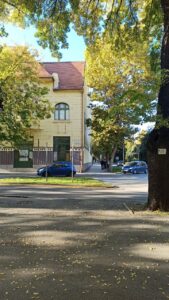The impact of art and architecture on property value
Art and architecture are not merely aesthetic elements; they play a significant role in shaping the value of properties. The interplay between these two disciplines can enhance the desirability of a location, influence buyer perceptions, and ultimately affect market prices. In this article, we will explore how art and architecture impact property value, examining the psychological, economic, and cultural dimensions of this relationship.
The Psychological Influence of Art and Architecture
The psychological impact of art and architecture on property value is profound. A well-designed building or a thoughtfully curated art installation can evoke positive emotions and create a sense of place. When potential buyers or renters experience a property that resonates with them aesthetically, they are more likely to perceive it as valuable. This emotional connection can lead to a willingness to pay a premium for a property that embodies beauty and creativity.
Moreover, the presence of art can enhance the overall ambiance of a neighborhood. Public art installations, murals, and sculptures can transform ordinary spaces into vibrant cultural hubs. This transformation often attracts more visitors and residents, thereby increasing demand for nearby properties. As neighborhoods become more appealing due to artistic endeavors, property values tend to rise in tandem with the enhanced community identity and pride.
Additionally, the architectural style of a building can significantly influence buyer perceptions. Unique or historically significant designs often stand out in the market, attracting buyers who appreciate craftsmanship and aesthetic appeal. Conversely, properties that lack architectural character may struggle to command high prices. Thus, the psychological allure of art and architecture can create a tangible impact on property value.
Economic Considerations in Property Valuation
From an economic standpoint, art and architecture can serve as key drivers of property value. Properties located in areas known for their artistic significance or architectural heritage often enjoy higher market values. This phenomenon is particularly evident in cities that promote cultural tourism, where art galleries, museums, and architecturally significant buildings draw visitors and residents alike. The influx of people can stimulate local economies, leading to increased demand for housing and commercial spaces.
Furthermore, the integration of art into urban planning can enhance property values by creating attractive public spaces. Parks, plazas, and streetscapes that feature art installations or architectural landmarks can elevate the desirability of surrounding properties. Developers and investors recognize that properties adjacent to well-designed public spaces often command higher rents and sale prices, making art and architecture a strategic consideration in real estate investment.
Investments in art and architecture can also yield long-term financial benefits. Properties that incorporate sustainable design elements or innovative architectural features may qualify for tax incentives or grants, further enhancing their value. As sustainability becomes a priority for many buyers, properties that reflect these values through thoughtful design and artistic expression are likely to see increased market interest and appreciation over time.
Cultural Significance and Community Identity
Art and architecture are integral to the cultural fabric of a community, and their influence on property value cannot be overstated. Neighborhoods that celebrate their artistic heritage or architectural significance often foster a strong sense of identity among residents. This cultural pride can lead to increased demand for properties within these areas, as buyers seek to be part of a vibrant community that values creativity and history.
Moreover, the presence of art and architecture can attract a diverse demographic, including artists, creatives, and professionals who appreciate cultural richness. This influx can lead to gentrification, where property values rise as the neighborhood becomes more desirable. While this process can bring economic benefits, it also raises concerns about affordability and displacement, highlighting the need for balanced development that respects the existing community.
In addition, cultural events such as art festivals, architectural tours, and community exhibitions can further enhance property values by drawing attention to the unique characteristics of a neighborhood. These events not only celebrate local talent but also create opportunities for businesses and property owners to benefit from increased foot traffic and visibility. As a result, the cultural significance of art and architecture plays a crucial role in shaping property values and community dynamics.
In conclusion, the impact of art and architecture on property value is multifaceted, encompassing psychological, economic, and cultural dimensions. As properties become more than mere structures, the aesthetic and emotional connections fostered by art and architecture can significantly influence buyer perceptions and market dynamics. Understanding this relationship is essential for developers, investors, and community planners who seek to enhance property values while fostering vibrant, culturally rich environments. By recognizing the intrinsic value of art and architecture, stakeholders can make informed decisions that benefit both the real estate market and the communities they serve.



